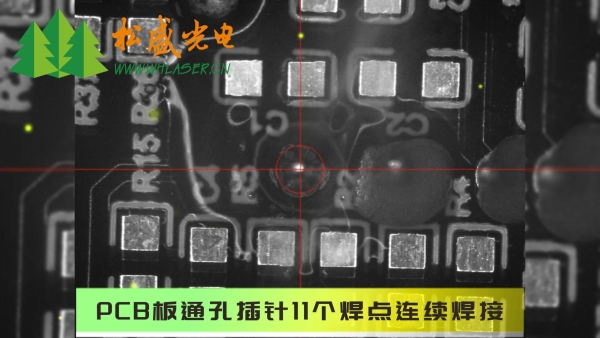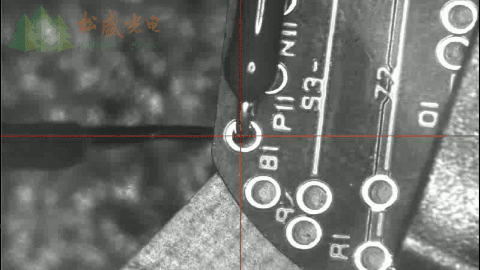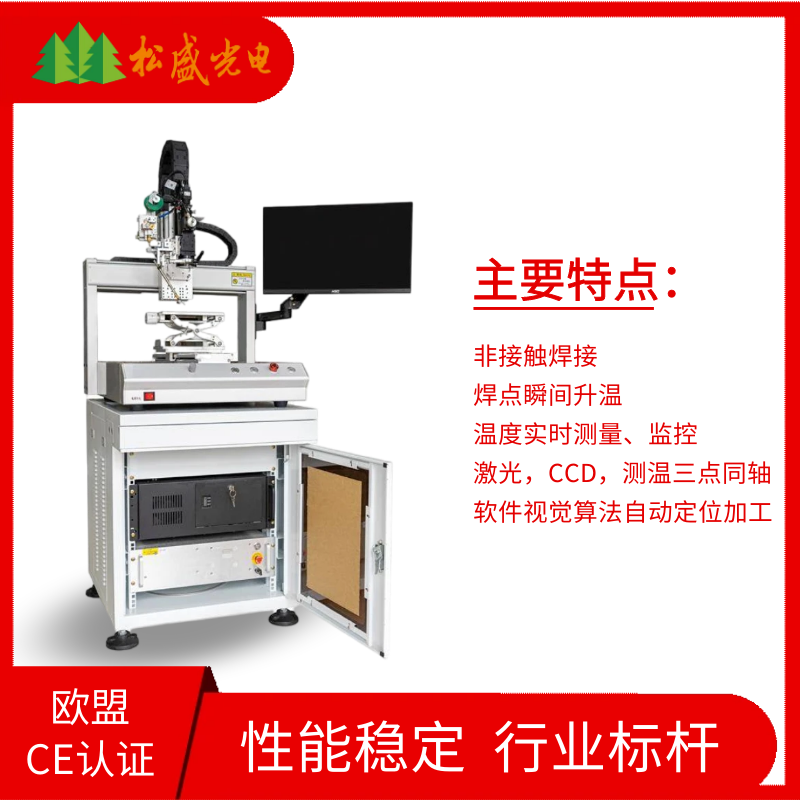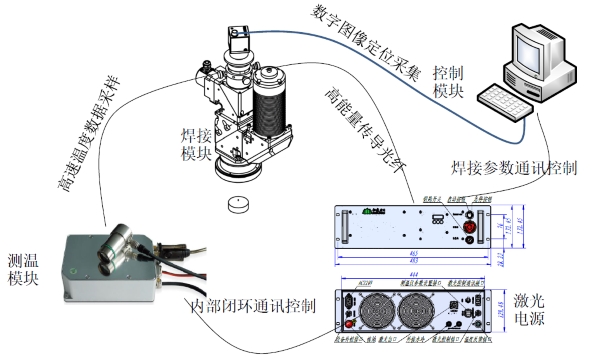Application Value and Advantages of CCD Visual Positioning in Laser Soldering Production Lines
In automated laser soldering technology, CCD visual positioning has emerged as the mainstream solution due to its high precision and superior adaptability. By capturing images through cameras and combining them with advanced algorithms for solder joint positioning, this technology significantly enhances production line efficiency, reduces costs, and drives intelligent manufacturing upgrades.
With the electronics manufacturing industry's growing demand for precision processing, automated laser soldering technology is increasingly becoming the dominant process in microelectronics assembly, owing to its exceptional accuracy, non-contact nature, and minimal thermal impact. Within this technology, precise solder joint positioning serves as the fundamental prerequisite for achieving high-quality soldering. This article will examine the positioning methods of automated laser soldering systems, with particular focus on elucidating the principles of CCD visual positioning technology and its unique value in automated production lines.

I. Common Positioning Methods for Automated Laser Soldering Machines
The positioning system of automated laser soldering machines directly impacts welding accuracy and efficiency. Current mainstream positioning methods can be categorized as follows:
Mechanical Positioning
Mechanical positioning controls the movement trajectory of the welding head or workpiece through preset mechanical structures (e.g., guide rails, lead screws, servo motors). Its advantages include high stability and relatively low cost, but it also has notable drawbacks:
▪ Poor flexibility: Requires pre-programmed fixed paths, making it difficult to adapt to complex or variable solder joint layouts.
▪ Limited precision: Mechanical wear or assembly errors accumulate, leading to degraded positioning accuracy over time.
▪ Narrow applicability: Only suitable for repetitive processing of large-volume, standardized products.
Sensor Positioning
This method uses devices such as photoelectric sensors, infrared sensors, or laser rangefinders to detect workpiece positions in real time and dynamically adjust the welding head coordinates. While it offers faster dynamic response than purely mechanical positioning, limitations remain:
▪ Environmental sensitivity: Prone to interference from workshop dust, oil, or light, causing misjudgments.
▪ Limited scope: Can only detect specific features (e.g., edges or height), failing to handle complex shapes or micro solder joints.
CCD Visual Positioning
Leveraging computer vision technology, high-resolution CCD cameras capture workpiece images, and image-processing algorithms extract feature point coordinates to guide the laser welding head with precision. CCD visual positioning has become the preferred solution for automated production lines due to its superior advantages, which will be analyzed in detail later.

II. Technical Principles and Core Advantages of CCD Visual Positioning
Technical Principles
CCD (Charge-Coupled Device) is a photoelectric conversion component that transforms optical signals into electrical signals. In automated laser soldering machines, the CCD vision system operates through the following workflow:
① Image Acquisition: High-definition images of workpieces are captured using industrial cameras.
② Image Processing: Algorithms (e.g., edge detection, template matching, deep learning) extract solder joint positions, angles, and other critical data.
③ Coordinate Conversion: The image coordinate system is aligned with the mechanical motion coordinate system to generate movement commands for the welding head.
④ Real-Time Feedback: Continuous monitoring of positional deviations during welding enables dynamic adjustment of the welding head's path.
Four Core Advantages of CCD Visual Positioning
(1) High Precision and Adaptability
CCD cameras achieve micron-level pixel resolution, and with sub-pixel algorithms, positioning accuracy can be controlled within ±5μm—meeting the demands of precision electronics (e.g., chips, FPC flexible circuits). Additionally, vision systems can swiftly adapt to different product models via software updates, eliminating the need for mechanical redesigns and significantly enhancing production line flexibility.
(2) Robust Performance in Complex Environments
Utilizing multi-light compensation (e.g., ring lights, coaxial lights) and image enhancement algorithms, CCD systems effectively overcome challenges like glare, shadows, and surface texture variations. For instance, when soldering coated metal components, the system auto-adjusts exposure settings to ensure clear visibility of feature points.
(3) Intelligent Error Correction
Unlike traditional methods, CCD systems offer real-time feedback and path correction. If workpieces shift due to vibration or thermal deformation, the system instantly detects and adjusts the welding head's trajectory, preventing batch defects.
(4) Multi-Task Coordination
In advanced production lines, CCD vision systems integrate seamlessly with other modules (e.g., AOI automated optical inspection, robotic arms) to enable unified "positioning-welding-inspection" workflows. For example, post-welding, the camera can conduct preliminary solder joint quality checks, reducing manual inspection efforts.

III. Application Value of CCD Visual Positioning in Automated Production Lines
Enhanced Production Efficiency
Traditional mechanical positioning requires frequent fixture changes, while CCD systems can adapt to new products simply by switching software programs, reducing line changeover time by over 70%. For instance, in smartphone motherboard soldering, a single production line can simultaneously handle multiple device models, significantly reducing equipment idle time.
Reduced Comprehensive Costs
Minimized manual intervention: CCD systems automatically identify workpiece positions, eliminating the need for manual calibration and reducing dependence on skilled operators.
Lower defect rates: The dynamic error correction feature decreases soldering defect rates from 3%-5% (traditional methods) to below 0.5%.
Extended equipment lifespan: Non-contact positioning reduces wear on mechanical components, lowering maintenance costs.
Facilitating Intelligent Manufacturing Upgrades
With the advancement of Industry 4.0, CCD visual positioning has become a key technology for realizing digital factories. For example:
Cloud-based data platforms enable real-time sharing of positioning parameters across production lines to optimize manufacturing processes.
Integrated AI algorithms allow the system to autonomously learn solder joint characteristics, further improving positioning efficiency.

Songsheng Optoelectronics Constant-Temperature Laser Soldering System delivers continuous 976/980nm infrared laser output. This integrated system combines a CCD coaxial alignment system with semiconductor laser technology, supporting multiple file formats import to achieve precision soldering.
The system's temperature feedback mechanism and CCD coaxial alignment capability ensure:
Consistent temperature maintenance at solder joints
Micron-level precision alignment for delicate components
High production yield rates in mass manufacturing
Contact: Mr.Xiao
Phone: +86-13385280662
E-mail: market001@whlaser.cn
Add: Room 02, Floor 5, Building 9, Gezhouba Sun City, No. 40, Gaoxin 4th Road, Donghu New Technology Development Zone, Wuhan